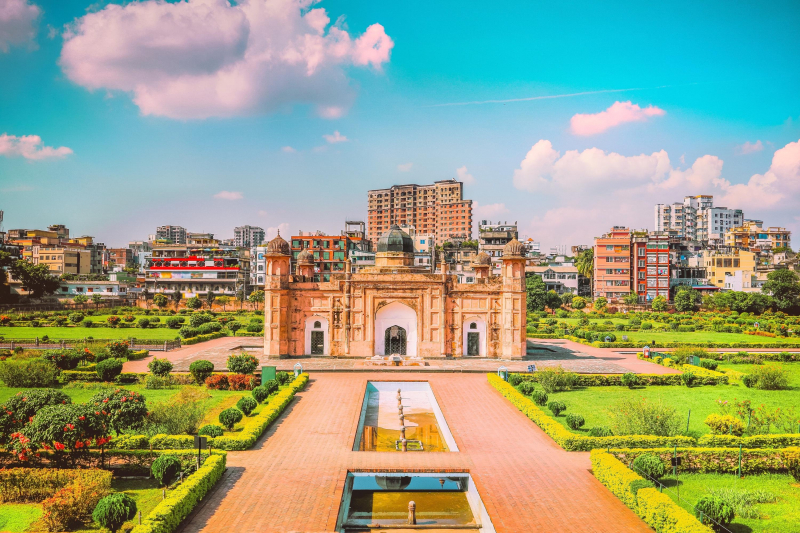Lalbagh Fort
Lalbagh Fort is a 17th-century Mughal fort complex located in the southwestern portion of Dhaka, Bangladesh, along the Buriganga River. Mughal Subahdar Muhammad Azam Shah, a son of Emperor Aurangzeb and subsequently emperor himself, began building in 1678 AD. Shaista Khan, his successor, did not continue the work, although staying in Dhaka until 1688.
The fort was never finished and remained abandoned for a long time. Much of the complex was demolished and is now surrounded by modern structures. During his vice-royalty in Bengal, Mughal Prince Muhammad Azam Shah, Aurangzeb's third son, began construction on the fort in 1678. He spent 15 months in Bengal. When his father, Aurangzeb, summoned him, the fort remained unfinished.
At the time, Shaista Khan was the new subahdar of Dhaka, and he did not finish the fort. Iran Dukht Pari Bibi, Shaista Khan's daughter, died there in 1684. Following her death, he began to believe that the fort was cursed and abandoned it. The mausoleum of Bibi Pari is one of the three primary elements of Lalbagh Fort.
Its popularity waned after Shaista Khan departed Dhaka. The main reason for this was the relocation of the capital from Dhaka to Murshidabad. The fort was abandoned once the Mughal dynasty's reign came to an end. The area was renamed Lalbagh in 1844, replacing Aurangabad, and the fort was renamed Lalbagh Fort.
For a long time, the fort was thought to consist of three structures (the mosque, Bibi Pari's tomb, and the Diwan-i-Aam), two entrances, and a section of the partially ruined fortification wall. Other structures have been discovered as a result of recent excavations by Bangladesh's Department of Archaeology. In the southwest corner of the southern fortification wall is a massive bastion. Utility buildings, a stable, and an administration block were located to the north of the southern fortification wall, and a lovely roof garden with fountains and a water reservoir was located to the west.
Location: Dhaka, Bangladesh











